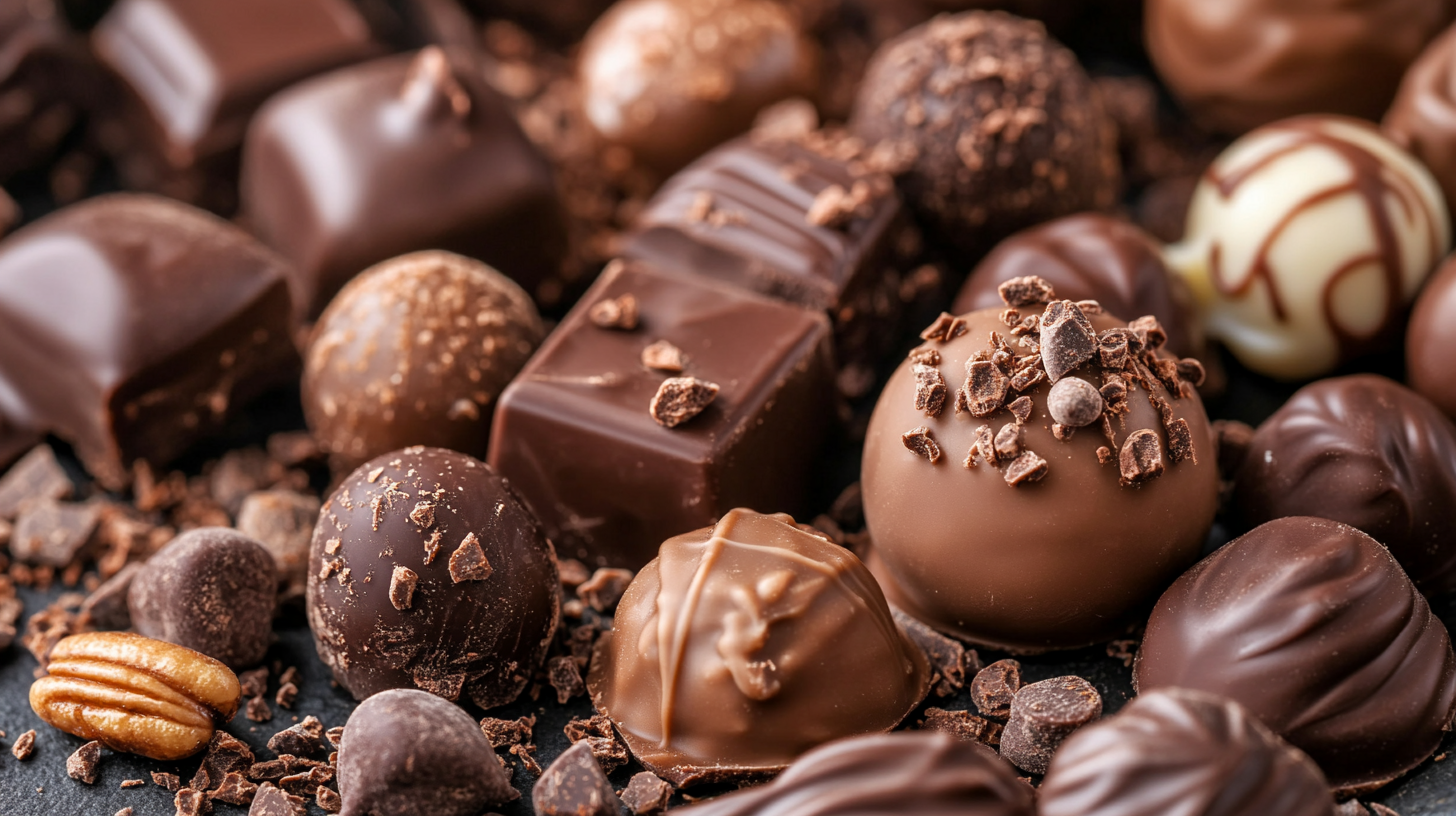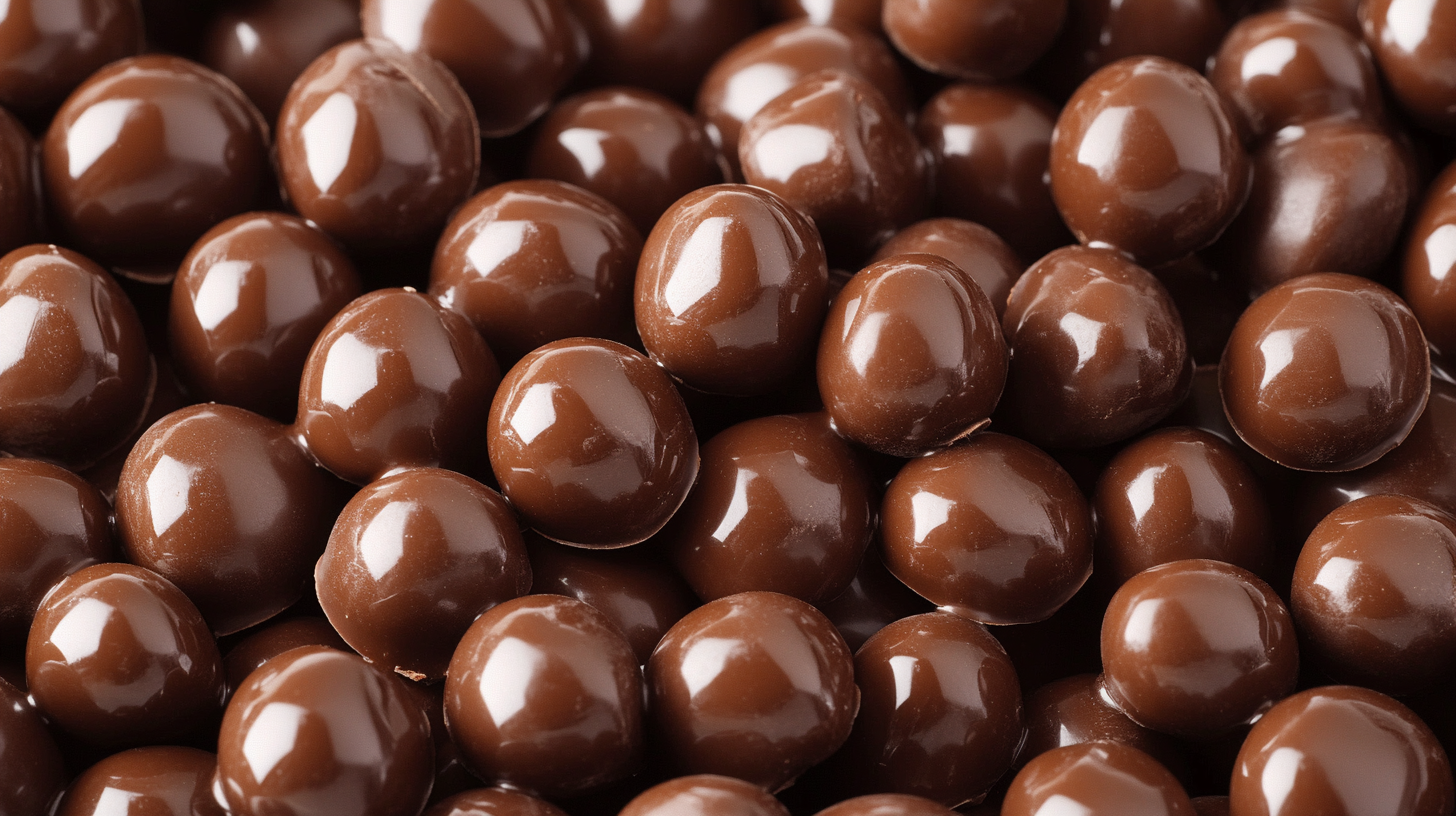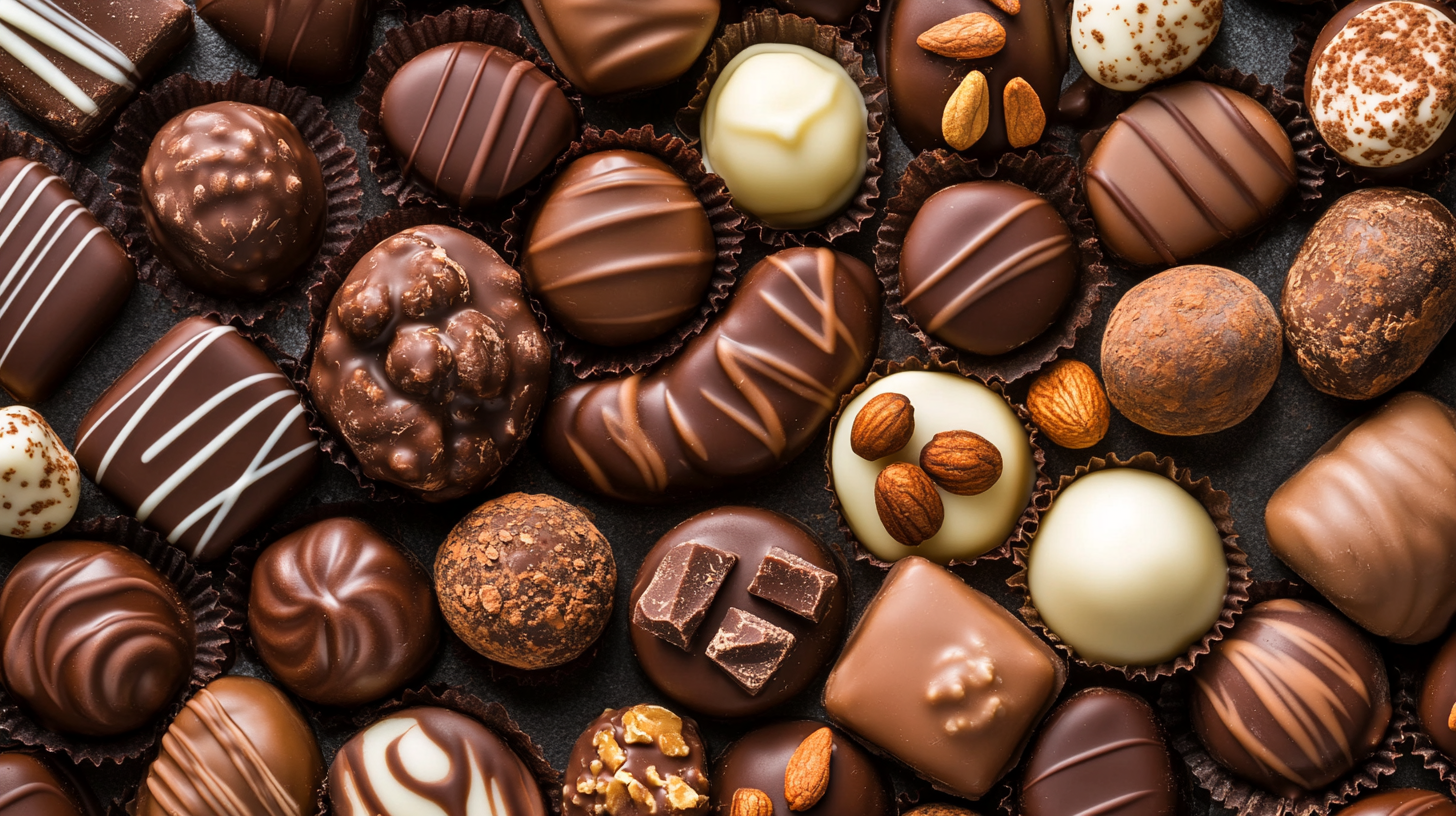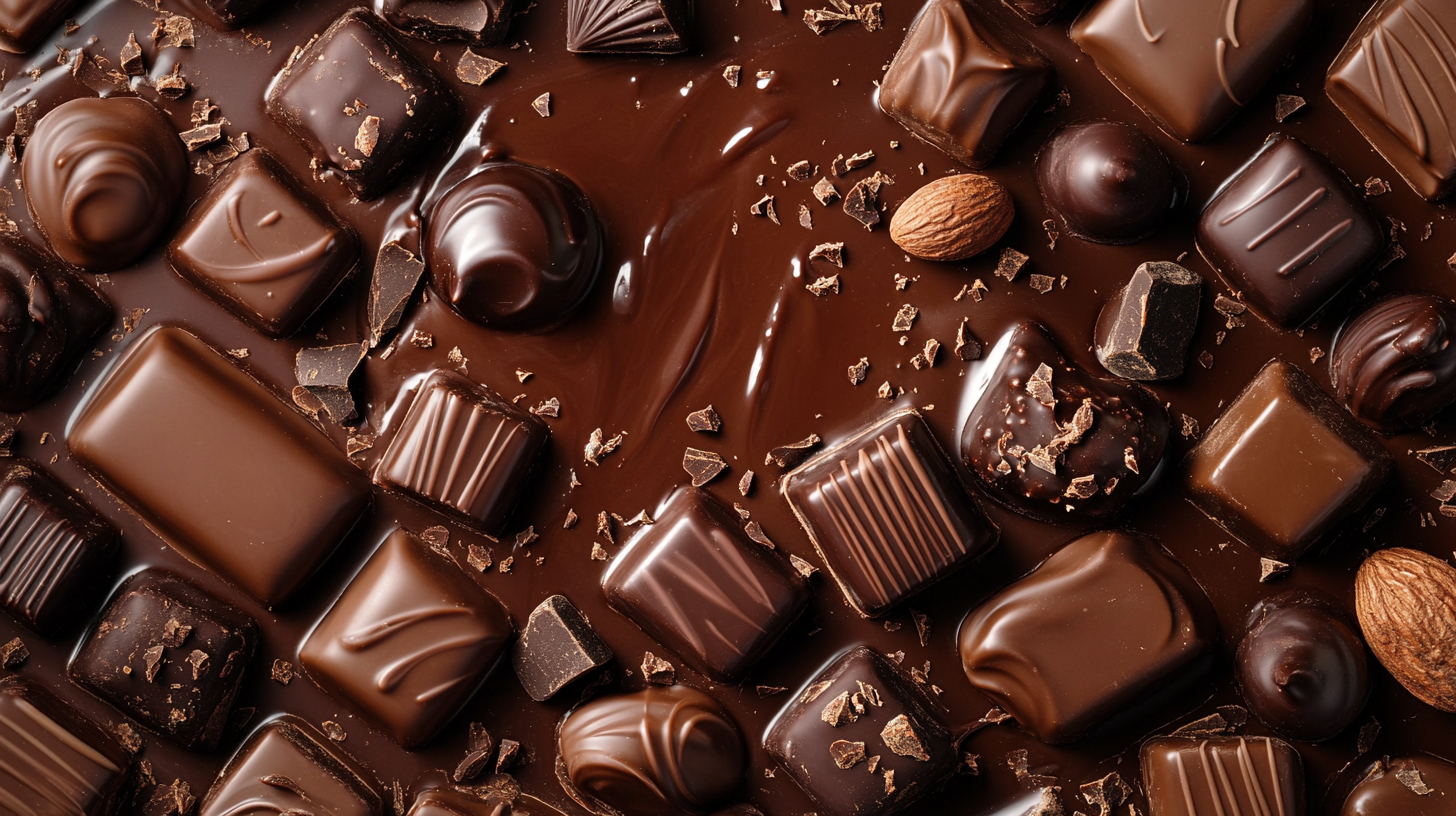In recent years, the chocolate coating industry has seen a remarkable surge in demand, driven by the growing consumer preference for confectionery products enriched with chocolate. According to a report by Grand View Research, the global chocolate market is projected to reach USD 161 billion by 2025, with a notable segment dedicated to chocolate-coated products that are popular for their taste and indulgence. This shift presents a lucrative opportunity for manufacturers to invest in advanced "Macchine per la ricopertura con cioccolato" that enhance production efficiency and product quality.
As the market evolves, understanding the various types and specifications of chocolate coating machines becomes crucial for global buyers seeking to innovate and improve their production capabilities. With numerous players and technological advancements in the industry, a detailed analysis of available machines is essential. This blog aims to provide comprehensive insights into the functionality, benefits, and trends surrounding chocolate coating machines, enabling manufacturers to make informed decisions that align with market demands and consumer preferences.

Chocolate coating machines play a pivotal role in modern confectionery production lines, delivering efficiency and precision that help manufacturers maintain quality and consistency. At the heart of these machines is their ability to evenly coat various products, from nuts to marshmallows, with a rich layer of chocolate. This process not only enhances the flavor and appearance of the products but also provides a protective barrier that extends shelf life, making chocolate coating an essential step in the production process. The functionality of chocolate coating machines can vary significantly based on design and technology. Many machines incorporate advanced mechanisms that ensure uniform coating thickness, which is crucial for both aesthetics and taste. These machines often utilize specific temperature controls and adjustable speed settings, allowing manufacturers to tailor the coating process to suit different types of chocolate and product shapes. Furthermore, some systems are equipped with cooling tunnels that quickly solidify the chocolate, reducing production time and improving overall efficiency. Automated chocolate coating machines are gaining popularity due to their capability to handle large volumes with minimal human intervention. This automation not only maximizes productivity but also reduces the risk of contamination and improves hygiene standards on production lines. With the increasing demand for innovative chocolate products, understanding the functionality of these machines enables global buyers to make informed choices, ensuring they invest in equipment that will enhance their production processes and meet consumer expectations.

When selecting a chocolate coating machine, global buyers must consider several key features that can significantly impact production efficiency and product quality. According to the "Global Chocolate Coating Machine Market Report 2021," the demand for chocolate coating machines is projected to grow by 6.5% annually, highlighting the importance of understanding the technology that drives these machines. One of the most critical features is the temperature control system, which ensures that the chocolate remains fluid for uniform coating. Machines with advanced temperature regulation can reduce on-the-fly adjustments, minimizing waste and enhancing the consistency of the final product.
Another essential feature is the machine's versatility. A chocolate coating machine should accommodate various product sizes and shapes, from confectionery to nuts and fruits. The "Packaging Machinery Market Statistics" indicated that around 30% of manufacturers prefer machines that can easily be adjusted for different product types without significant downtime. This adaptability not only boosts production rates but also helps manufacturers respond quickly to changing consumer demands.
Furthermore, efficiency and ease of cleaning are paramount. Machines that feature quick-disassembly designs or self-cleaning functions can significantly reduce downtime, thereby optimizing production cycles. As noted in the "Food Processing Technology Review," companies can cut cleaning times by up to 40% with the right machine design, leading to considerable cost savings over time. Thus, those in the market for chocolate coating machines should prioritize these factors to enhance their operational effectiveness and product quality.

When exploring chocolate coating technologies, it’s essential to analyze the various methods deployed in the industry to enhance product quality and efficiency. One of the primary technologies includes the traditional drum coating, where chocolate is applied to confections via rotating drums. This method, while effective, often faces challenges in efficiency and uniformity. Recent comparative analyses reveal that more advanced techniques, such as fluidized bed coating and spray coating, improve the consistency of chocolate coverage while minimizing waste. These innovations have resulted in a notable increase in production rates, with some studies indicating that newer methods can boost output by up to 30% compared to conventional approaches.
Another critical aspect of chocolate coating technology is the formulation of the chocolate itself. The recent findings in chromatographic methods highlight the importance of cocoa butter quality and its impact on coating performance. High-quality cocoa butter not only enhances the flavor and texture of the chocolate but also contributes significantly to the coating's adherence to the substrate. Research shows that precise control over cocoa butter composition can lead to improved coating stability and longevity, which is especially crucial for products exposed to varying environmental conditions.
Finally, the investment in energy-efficient drying technologies for cocoa beans directly affects the quality of chocolate coatings. Recent reviews suggest that the proper drying methods can enhance the sensory characteristics of cocoa, which in turn, influences the quality of the final chocolate product. Techniques such as microwave and freeze drying stand out for their ability to preserve flavor compounds while optimizing processing times, thus enhancing overall production efficiency in chocolate coating applications. These insights underline the continuous evolution of chocolate coating technologies in response to market demands for quality and efficiency.

When it comes to chocolate coating machines, maintenance and troubleshooting play pivotal roles in ensuring consistent performance and product quality. Regular maintenance not only extends the life of the equipment but also helps prevent unexpected breakdowns that can disrupt production lines. One of the first steps in maintaining a chocolate coating machine is to conduct thorough cleanings after each use to remove any residual chocolate and prevent clogging. It is essential to develop a cleaning schedule that aligns with the machine’s usage frequency, employing food-safe cleaning agents to avoid contamination.
In addition to routine cleaning, it’s crucial to inspect moving parts and electrical components regularly. Lubrication of gears and bearings can significantly reduce wear and tear, improving operational efficiency. Operators should also be trained to recognize common signs of wear, such as unusual noises or changes in the machine's output quality. If issues arise, troubleshooting should involve a systematic approach—first checking for simple problems like blockages or misalignments before diving into more complex electrical or mechanical failures.
Lastly, having a comprehensive troubleshooting guide handy can empower operators to address minor issues independently, reducing downtime. Such a guide should include symptoms of common problems, potential causes, and step-by-step instructions for resolution. By investing time in maintenance and fostering a proactive approach to troubleshooting, industries can enhance the reliability of their chocolate coating machines, ensuring a smooth and efficient production process.
The market for chocolate coating machines is experiencing significant transformations driven by emerging trends and innovations. As the demand for convenient and ready-to-eat foods continues to rise, manufacturers are increasingly integrating advanced technologies in chocolate coating machinery. This shift is evidenced by a broader adoption of automation and artificial intelligence (AI) across the food processing sector, leading to more efficient and high-quality production capabilities.
Recent insights indicate that the global industrial machinery market is expected to grow substantially, with the AI segment alone forecasted to reach $2.45 billion by 2023. This momentum in technological adoption is crucial for the chocolate coating machinery sector, as it paves the way for improved consistency, reduced waste, and enhanced operational efficiency. The advancements in smart packaging solutions also play a pivotal role, allowing chocolate products to maintain freshness while appealing to the evolving consumer preferences for convenience.
Furthermore, as sustainability becomes a key focus for consumers and manufacturers alike, innovations in chocolate coating machines are likely to incorporate eco-friendly practices and materials. This trend aligns with the broader movement in the food packaging industry, where environmental considerations are increasingly influencing purchasing decisions. Overall, the evolution of chocolate coating machinery reflects a dynamic industry that is poised for growth in the coming years, as companies adapt to market demands and technological advancements.
Utilizziamo i cookie per migliorare l'esperienza utente. Per maggiori informazioni, consulta la nostra Cookie Policy.